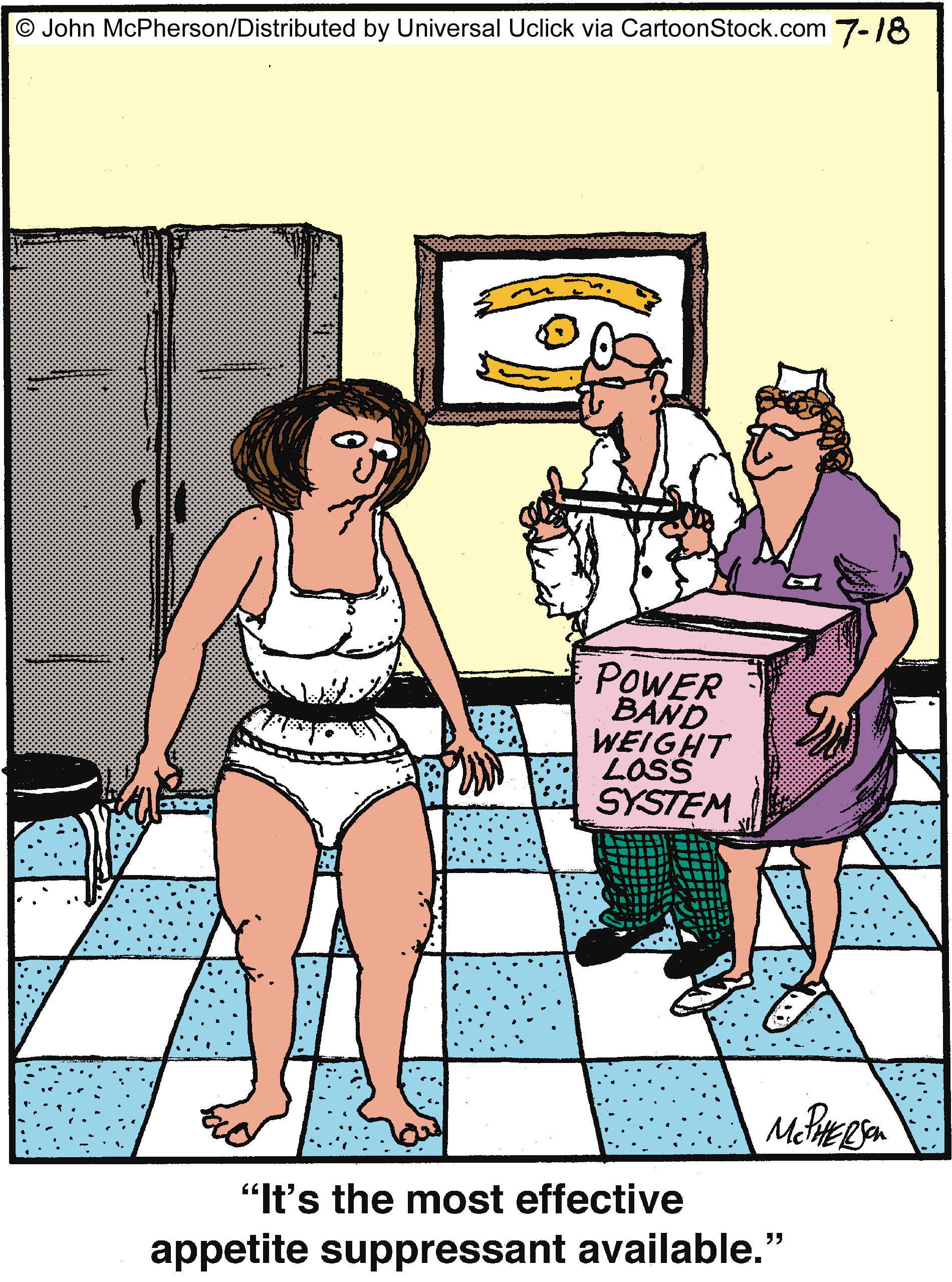Pondering the weighty subject of… weight.

Guyside columnist Bob LeDrew will never be mistaken for this person.
I know I don’t. But I do see a certain uptick in that “time spent thinking about diet” graph in recent years.
As an adolescent, I was blessed with a metabolism that burned everything I could shovel into my mouth and then some. And even through most of my adult life, I really haven’t thought about diet beyond “when is the next meal?”
But as I edge toward 50, I have started to make some changes. Why? First, I have seen that little band of blubber around my waist grow from a finger-width to what is probably 15-20 pounds of weight I don’t really need. Second, my encounter with bladder cancer in 2006 led to some increased concern about health in general. Third, it was always so simple when you could go out for beer and wings at will and never show any effect (my personal best: 80 wings with an unwise quantity of beer to wash ‘em down in an evening), but when you start to feel the hangover from booze as well as post-gluttonous digestive effects, it makes you think.
At least when it comes to body image, I think men and women are working from two separate objectives. It’s my belief that generally, women are more affected by pop-culture images of women than men. I don’t look at Hugh Jackman and think “I’m grotesque.” I think men are more tied to the body image of their younger selves, and that it takes some sort of breakthrough for a man to realize that his body isn’t the same at 47 as it was at 17, or 27.
And of course, it’s clear that we men have some real issues around body image — and body reality. Even if you think you’re fine, men in the United States have a real-life obesity problem. Check this out.

These guys show the “average” man from each of the US, Japan, the Netherlands, and France
I certainly am aware of this reality. And I would like to make some changes. I don’t need or want to turn into the aforementioned Mr. Jackman. So here’s an entirely arbitrary list of what I think is going on with my diet — what I am doing right, and what I am doing wrong at this point?
Good points:
- I don’t eat a lot of fried food
- My vegetable intake is good
- I eat fish at least once a week
Now the weak points:
- Too many canned soups for lunch (bad for the sodium count)
- My long-term love affair with all things chocolate needs to be pruned
- Not enough snacking action using “healthier things” like fruit or things that aren’t chocolate
- I like beer
I’m going to start doing two things. I’m going to track how many healthy snacks I eat and how much chocolate I consume. And every week, I’m going to update this table as a way of being accountable to you — and to me.
| Healthy Snacks | Chocolate | |
| Week of October 13 | 0 | 2 bars, 1 gelato |
It’s not weight gain! It’s a shapeshifter!
[Copyright: Doug Savage. Many thanks for use of this cartoon. Who doesn’t love a chicken?! Show some love… www.savagechickens.com]
In literature, shapeshifting takes place when an individual finds her figure involuntarily changed by someone or something else, menopause for example! For women in midlife in particular, weight gain often becomes a primary concern. But it’s not just any weight gain — it’s the spare tire in the midsection, the sudden belly that seems to appear out of nowhere, that causes the most distress.
If you go back through the archives on weight gain during menopause, you’ll discover that the midsection bulge is a personal pet peeve. And while research has shown the mindful meditation, getting up from your chair during the workday, biking and perhaps even isoflavones may make a difference, a recent review in Climacteric journal goes one step further towards clarifying the ‘why.’
The findings may interest you. For example, weight gain itself does not appear to be affected by hormonal changes during menopause. “It’s a myth that menopause causes women to gain weight” says the leading review author Professor Susan Davis from Monash University. Rather, she says that “it’s really just a consequence of environmental factors and aging,” (i.e. absolute weight gain as we age is influenced by non-hormonal factors, such as low activity levels, previous pregnancies, family history of obesity and even the use of certain antidepressants or having undergone chemotherapy). However, hormones — namely the fall in estrogen — cause the fat to deposit itself in the belly (oh, joy!). In fact, data suggest that during perimenopause, there is a rapid increase in fat mass and redistribution of this fat to the abdominal area, leading to an increase in total body fat.
Whether or not you call it weight gain or shapshifting, the result of this excess weight goes well beyond physical appearance and self esteem. We know that excess weight, especially belly fat, can lead to metabolic syndrome and other serious issues. And it’s really difficult to get rid of once it decides to rest in the abdominal area. Still, if you don’t want to go the HRT route (which may help prevent the increase in abdominal fat), there’s really only one solution: diet and exercise. And more diet and exercise.
Frustrating, isn’t it? I’d like a do-over on the shapeshifting thing. Right now? The Beast is looking pretty darn attractive!
Read More
Stress eating? Spare Tummy Tire? Try a little mindfulness…
Mindfulness. It keeps popping up in different areas of health. Last time I posted about mindfulness training, it was within the context of hot flashes and how training your mind to reduce stress can influence how hot flashes are experienced. But what about stress eating?
Many women (and men) turn to emotional eating when they are stressed. And unfortunately, when it comes to weight gain, many of the most serious health affects of excess weight tend to be linked to that roll around the tummy area. In fact, abdominal (or visceral) obesity produces inflammation in the body that can increase the risk for diabetes and heart disease. In women in particular, who may be prone to weight gain in their abdominal area due in part to hormone fluctuations, it’s a double-edged sword. Add the fact that chronic stress increases levels of cortisol, which in turn, mobilizes the migration of fat cells to the midsection, and well, it’s a disaster in the waiting.
As I have written previously, cortisol is a hormone that is secreted by the adrenal glands. Its primary role in the body is to regulate energy (by producing blood sugar or metabolizing carbohydrates, protein and fats) and mobilize it to areas where is it most needed so, cortisol levels tend to peak in the early morning and then gradually decline throughout the day. Research has shown, however, that women have higher cortisol levels than men, and that certain women –especially those with greater amounts of abdominal fat — may be reacting to a large disruption in the release of cortisol that causes a greater than normal difference between morning and evening levels of the hormone. This disruption is believed to be related, at least in part, to exposure to prolonged physical and mental stress. This psychological component is huge, because it tends to trigger the desire to consumption of food that is high in fat and/or sugar, which also tends to promote abdominal weight gain.
How do you break the cycle?
Researchers are now saying that mindfulness may be an important strategy to beat the bulge and the stress. In fact, whey they looked at the effects of a program that focused on interrupting habitual thoughts, emotions and behaviors, that is exactly what they found.
In this small exercise, 24 overweight and obese women not yet in menopause learned to use guided meditation as a way to introduce mindful eating (i.e. paying attention to their physical sensations of hunger, stomach fullness, taste satisfaction and food cravings). They were also taught to be more aware of emotional eating triggers and negative emotions as well as to be more loving and accepting of both themselves. Over nine weeks, they were able to share their challenges, concerns and experiences and then learned new meditations to overcome what they felt were roadblocks in their progress. During the same four week period, 23 women were placed on a waiting list for comparison purposes.
Regularly engaging in mindfulness training set these women off on the right foot upon awakening and in fact, lowered their cortisol levels in the early am hours. What’s more, women who reported having the greatest improvements in their response to stress and emotional eating triggers tended to have the largest reductions in abdominal fat. Additionally, reductions in waking cortisol levels were related to reductions in abdominal fat as well.
Mind you, the women in this particular study were premenopausal, namely because the researchers say that hormonal declines naturally lead to deposits of fat in the midsection. However, if psychological stress compounds weight gain in this area as much as it affects overall wellbeing and menopausal symptoms, it might be worthwhile considering if incorporating ‘a little mindfulness’ into one’s life could help shift fat away from the abdomen as well. It’s an interesting idea and definitely worth exploring…especially as we move into what many regard to be the most stressful and eating laden season of the year: the holidays!
Try a little mindfulness. Not only can it benefit your brain but your tummy might reap the benefits as well.
Read MoreAnd then the power died…what did I forget?
I was planning on writing a review of a new documentary about menopause when the power died. Mama Nature and her power surge obviously has other plans for me so I will leave you to an oldie but goodie. Look for Wednesday’s Bubble cause this doc is worth consideration.
And so, without further ado…
If you’re anything like me, you are starting to forget things. Things you need to do, why you walk into rooms, shopping lists, things you said, the whole nine yards. For me, it’s become the norm, not the exception and while I spend a lot of time making jokes about it, it also drives me crazy.
Yet, today’s Bubble is not one that I’m likely to forget. I’d like to think of it as one part inspiration and one part WTF? And it leaves me with a whole lot of questions to boot.
Study findings suggest that gaining weight during menopause may increase the risk for loss of gray matter. Gray matter refers to the cortex of the brain, which contains nerve cells. It is involved in muscle control, sensory perception (seeing/hearing), emotions, speech and finally, memory.
In this study, which was published in the online edition of the journal Psychosomatic Medicine, researchers evaluated brain imaging data, demographic information (height, weight) and behavioral measures (perceived psychiatric stress) obtained from 48 healthy postmenopausal women. Data were collected over a 20-year period.
The findings showed a unique association between increase in body weight during the transition from peri- to post-menopause (as measured by body mass index or BMI) and a 22% reduction in grey matter volume. These findings occurred in women who were otherwise healthy, had no history of heart disease or psychiatric illness and did not meet the threshold for obesity (>30 BMI). All women had also undergone natural menopause.
The researchers suggest that weight gain during menopause is a “highly modifiable risk factor” that may help to prevent or slow “potential alterations in brain function that are important to quality of life.”
I’ve written previous posts on cognitive issues during menopause, whether they be linked with life stressors, HRT or aging. Now it seems that researchers are telling us that weight gain may also be a risk factor.
Less clear is how much weight gain and what we should do about it. In general one solution to combating weight gain in midlife is restraint. Coupled with exercise, this may just be the magic formula. In the meantime, I think that we need a few more studies to take a closer look at brain matter changes in midlife.
What do you think?
I just forgot why I’m asking you that…!
Read MoreWednesday Bubble: Get up and…
move? You bet!
According to a newly published study in the advanced online edition of European Heart Journal, taking breaks from long stints at your desk or even while you’re playing couch potato can go a long way towards preventing heart disease and losing some of that waistline bulge. In fact, the researchers say that prolonged periods of being sedentary, even if you regularly participate in moderate to vigorous physical activity, can increase the risk of heart disease. The bottom line? It’s not only the length of time you’re spending at your desk or on your derriere but how often you interrupt that time that counts.
This is the first time that a large, multiethnic population of varying ages has been evaluated to determine how a lack of activity affects certain markers of heart disease, including inflammation, waist circumference, cholesterol and blood fats. Researchers studied 4,757 participants over a period of three years who wore a small device (an accelerometer) that measures both the amount and intensity of activity; this allowed them to collect data on inactivity and breaks in inactivity.
The findings? Irrespective of factors like exercise time, diet and smoking, people who took the most breaks from inactivity (~179 breaks a day) had, on average, a 1.6 inch smaller waist circumference than people who took the least amount of breaks (~14 breaks per day) and remained inactive for the longest period of time. Moreover, taking breaks from being sedentary appeared to improve blood fats and blood glucose levels as well as C-reactive protein level (CRP, a blood protein that many experts believe, increases heart disease risk because of its role in promoting inflammation). Another interesting finding was gender-based; even though women tended to be more sedentary overall, they did take more breaks, thereby improving their heart disease risk. This is especially notable since research has shown that not only is heart disease the number one killer of women, but it tends to increase as estrogen levels wane.
Dr. Healy, the study’s lead researcher, suggests that even small changes, standing for as little as one minute at various intervals throughout the day, may help lower heart disease risk and counter the danger of being sedentary for too long. In a work environment, this means, standing up when talking on the phone, walking over to a colleague, using the restroom, and of course, taking the stairs. If you work at home, some of these recommendations are adaptable, such as making a point to take out the garbage, walk outside for a minute or put in a load of laundry.
Truly, get up and move as often as possible. It may save your life as well as your waistline!
Read More









